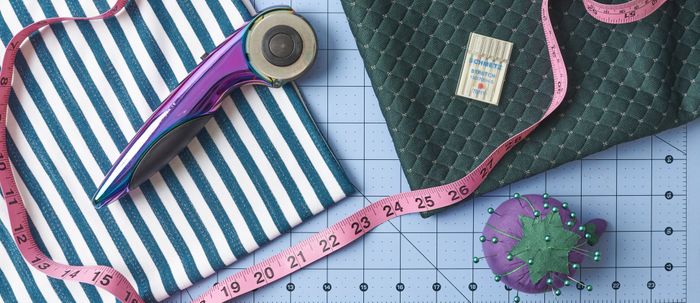3 Techniques for V-Necklines in Knits
Three methods to help you get to the point
V-necks are attractive because they highlight the wearer’s face and elongate the neck. With a change of accessories, a V-neck knit top or dress can easily be dressed up or down, making it a comfortable and useful wardrobe staple. However, V-necks in knits have the unfortunate reputation for being a hassle to sew well.
Over the last few years, as I have expanded my work wardrobe (composed mostly of dressy knitwear), I’ve developed a few methods to make perfect V-neck bands in knit fabrics. The first method, which I call the faux miter, bypasses the most difficult step of a V-neck band. The more traditional second method relies on reconstructing and inserting a true mitered band. The final method begins with an overlapped V point, which is inserted into the neckline. All three techniques yield equally nice results, so the choice is yours. As a bonus, these methods can be used to create square neckline bands or asymmetrical neckbands that come to an off-center point. There’s no longer a reason to hesitate when sewing a V-neck. You’ll get a professionally finished result every time, with any one of these three techniques.
Prepare the band and bodice
The beginning steps for sewing a V-neck are the same no matter what technique you choose for attaching the band: prepping the band strips, and doing some initial sewing on the garment. These instructions are written for a 5/8-inch-wide seam allowance.
Band strip
1. Cut the band strip. For a finished band that is 3/8 inch wide—an attractive width in most knit fabrications—cut a 2-inch-wide strip. Make the strip several inches longer than the total neckline circumference; you’ll stretch and cut it to fit during the application process. Wider bindings may be appropriate for sportier looks. Use self-fabric or a…
Start your 14-day FREE trial to access this story.
Start your FREE trial today and get instant access to this article plus access to all Threads Insider content.
Start Your Free TrialAlready an Insider? Log in






Log in or become a member to post a comment.
Sign up Log in